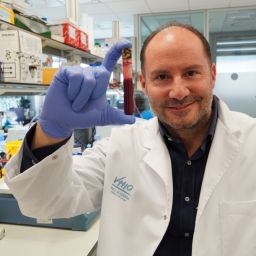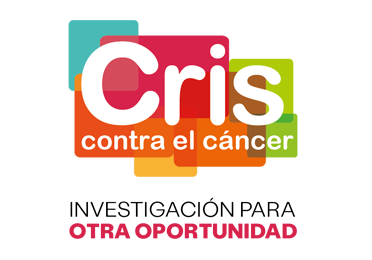
- Commonly used liquid biopsy techniques test for tumour mutations in a single gene or in a specific set of genes in the blood. In this study, a new liquid biopsy technique that uses mass sequencing of all 20,000 human genes or tumour exome has been employed.
- Researchers from the VHIO and Leicester Cancer Research Centre have demonstrated that it is possible to monitor the genomic changes that occur in the tumour after applying different therapies, as well as to detect the molecular mechanisms used by cancer to evade the immune system
- This new analysis is proposed as a tool that may, in the future, help doctors to make decisions by offering them more comprehensive information on the evolution of different tumour mutations.
Barcelona, May 3, 2021– In recent years, liquid biopsy has been gaining increasing prominence in oncology. Various studies have shown that, through a simple blood sample, oncologists can glean important information on determining therapeutic targets, monitoring relapse post surgery, and detecting molecular mechanisms of drug resistance or sensitivity. One new use of the liquid biopsy would be as a tool for improving the understanding of tumour progression over time. A study that has just been published in the journal Annals of Oncology, and conducted by the Vall d’Hebron Institute of Oncology (VHIO) in collaboration with the Leicester Cancer Research Centre, in the United Kingdom, and the Barcelona Supercomputing Centre (BSC) extends the possibilities of liquid biopsy.
To conduct this research, among other aspects, eight serial plasma samples collected throughout the oncological history of a patient were analysed. Samples from the primary tumour and local recurrence were also analysed. ‘For the first time, we have demonstrated that the progression of a tumour -from diagnosis, relapse after surgery, to the formation of metastases- can be understood through the sequencing of the entire exome, using the circulating tumour DNA contained in the blood. We saw how, over a 12-year period, the tumour acquired new mutations and how it developed successive mechanisms for evading the immune system. We have extended the boundaries of what is possible with a liquid biopsy’, explains Dr Rodrigo A. Toledo, a translational researcher in VHIO’s Gastrointestinal and Endocrine Tumours Group and coordinator of CIBERONC’s liquid biopsy work module, who has led this research.
In 2018, Dr Rodrigo A. Toledo had published a study illustrating the possibility of using exomes in liquid biopsy to identify drug resistance mechanisms. The results in this new research study are an extension of the previous one and open up the possibility of using this new, much more comprehensive analysis for other patients. Accordingly, it has started to be applied in other projects.
Understanding the evolution of mutations
Tumour cells are highly heterogeneous, both within the tumour itself and over time. These cells mutate in response to the treatments administered to control the course of the disease, leading to drug resistance. Therefore, patient follow-up is crucial, both to anticipate these mutations and to assess a possible change of treatment when necessary. Tissue sampling is not, however, always easy and liquid biopsy, which involves the analysis of free circulating tumour DNA in plasma, is a valuable tool.
The analysis of the patient’s samples allowed the research team to identify all the mutations that occurred over time. This made it possible to trace the entire clonal evolution and the changes that occurred in the mutational signature over time, as well as to identify which was ultimately the lethal clone that led to the patient’s death. ‘This information could be of enormous value. Looking to the future, it could provide significant support for therapeutic decision making, as it will be possible to search for the most appropriate therapies to tackle evolving cancer’, says Dr Rodrigo A. Toledo.
Characterising immune system evasion
The other major contribution of this study has been to provide valuable information that helps to understand the strategies followed by tumour cells to become invisible to the immune system and thus evade it. ‘In the war between the immune system and the tumour, the latter attempts to trick the immune system in different ways in order to continue to grow and metastasise. In our analysis, we have been able to discern, among other mechanisms, the loss of copies of HLA, which encodes proteins that present signals to the immune system for it to recognise tumour cells; the variation in the number of copies of PD-L1, which is related to the inactivation of T lymphocytes; and the decrease in the number of neoantigens, which are tumour signals recognised by the immune system to trigger an anti-cancer response’, says Dr Rodrigo A. Toledo.
This type of study requires a multidisciplinary team involving oncologists, researchers from molecular biology and genomics laboratories, and bioinformaticians capable of handling large amounts of data generated from patient samples. ‘Traditional genomic studies typically sequence the exome of one tumour sample per patient. Our approach has generated results from 11 exomes from one single patient, which implies a very large quantitative and qualitative leap for data analysis. We have other similar projects underway, and VHIO is gaining a lot of experience in this type of study’, concludes Dr Toledo.
Reference:
Hastings RK, Openshaw MR, Vazquez M, Moreno-Cardenas M, Fernandez- Garcia D, Martinson L, Kulbicki K, Primrose L, Guttery DS, Page K, Toghill B, Richards C, Thomas A, Tabernero J, Coombes RC,Ahmed S, Toledo RA*, Shaw JA*. “Longitudinal whole-exome sequencing of cell-free DNA for tracking the co-evolutionary tumor and immune evasion dynamics”. Annals of Oncology 2021;32:681-684. D.O.I. https://doi.org/10.1016/j.annonc.2021.02.007
*corresponding authors
Toledo RA, Garralda E, Mitsi M, Pons T, Monsech J, Vega E, Otero Á, Albarran MI, Baños N, Durán Y, Bonilla V, Sarno F, Camacho-Artacho M, Sanchez-Perez T, Perea S, Álvarez R, De Martino A, Lietha D, Blanco-Aparicio C, Cubillo A, Domínguez O, Martínez-Torrecuadrada JL, Hidalgo M. “Exome Sequencing of Plasma DNA Portrays the Mutation Landscape of Colorectal Cancer and Discovers Mutated VEGFR2 Receptors as Modulators of Antiangiogenic Therapies”. Clin Cancer Res. 2018;24:3550-3559. D.O.I. https://doi.org/10.1158/1078-0432.ccr-18-0103



















